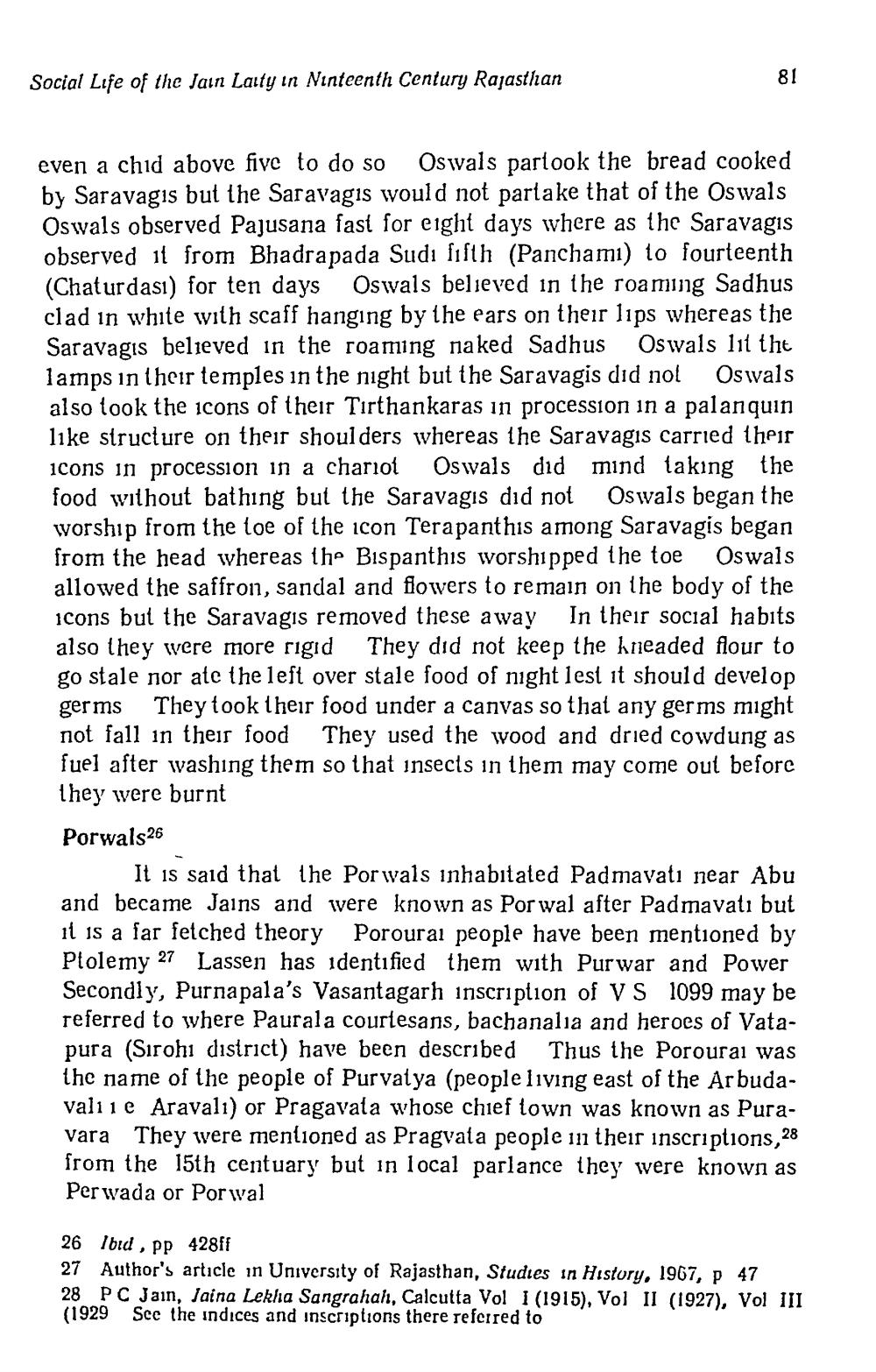________________
Social Life of the Jain Laity in Ninteenth Century Rajasthan
even a chid above five to do so Oswals partook the bread cooked by Saravagis but the Saravagis would not partake that of the Oswals Oswals observed Pajusana fast for eight days where as the Saravagis observed it from Bhadrapada Sudi fifth (Panchamı) to fourteenth (Chaturdası) for ten days Oswals believed in the roaming Sadhus clad in white with scaff hanging by the ears on their lips whereas the Saravagis believed in the roaming naked Sadhus Oswals lit the lamps in their temples in the night but the Saravagis did nol Oswals also took the icons of their Tirthankaras in procession in a palanquin like structure on their shoulders whereas the Saravagis carried their icons in procession in a chariot Oswals did mind taking the food without bathing but the Saravagis did not Oswals began the worship from the toe of the icon Terapanthis among Saravagis began from the head whereas the Bispanthis worshipped the toe Oswals allowed the saffron, sandal and flowers to remain on the body of the icons but the Saravagis removed these away in their social habits also they were more rigid They did not keep the hneaded flour to go stale nor ate the left over stale food of night lest it should develop germs They took their food under a canvas so that any germs might not fall in their food They used the wood and dried cowdung as fuel after washing them so that insects in them may come out before They were burnt Porwals26
It is said that the Por wals inhabitated Padmavati near Abu and became Jains and were known as Por wal after Padmavati but it is a far fetched theory Poroural people have been mentioned by Plolemy 27 Lassen has identified them with Purwar and Power Secondly, Purnapala's Vasantagarh inscription of VS 1099 may be referred to where Paurala courtesans, bachanalia and heroes of Vatapura (Sirohi district) have been described Thus the Porourai was the name of the people of Purvatya (people living east of the Arbudavalin e Aravalı) or Pragavata whose chief town was known as Puravara They were mentioned as Pragvata people in their inscriptions,28 from the 15th centuary but in local parlance they were known as Perwada or Porwal
26 Ibid, pp 428ff 27 Author's article in University of Rajasthan, Studies in History, 1967, p 47 28 PC Jain, Jaina Lekha Sangrahah, Calcutta Vol 1 (1915), Vol II (1927), Vol III (1929 See the indices and inscriptions there referred to




